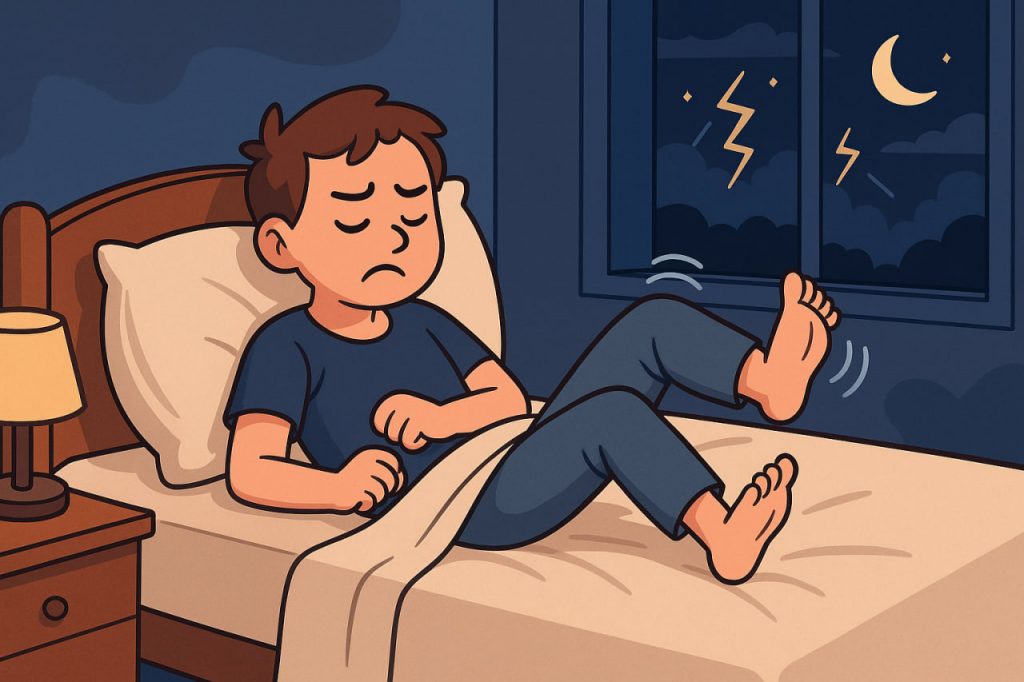Restless Legs Syndrome (RLS) is a neurological condition characterized by an uncontrollable urge to move the legs, often accompanied by uncomfortable sensations. These symptoms usually worsen in the evening or at night and can interfere with sleep, leading to fatigue and reduced quality of life.
1. Causes and Risk Factors
While the exact cause of RLS is not fully understood, several factors can contribute to its development:
- Genetics: A family history of RLS increases risk.
- Iron deficiency: Low iron levels in the brain may disrupt dopamine function.
- Chronic diseases: Conditions such as kidney failure, diabetes, or neuropathy can trigger symptoms.
- Pregnancy: Hormonal changes can temporarily cause RLS, especially in the third trimester.
2. Recognizing the Symptoms
Common signs of RLS include:
- Uncomfortable sensations in the legs (tingling, crawling, pulling).
- Temporary relief after movement.
- Symptoms worsening during rest or inactivity.
- Sleep disruption and daytime fatigue.
3. Non-Medical Strategies for Managing RLS
Since self-medication is not advisable, lifestyle changes are often the first approach:
- Regular physical activity: Light exercise can improve circulation.
- Sleep hygiene: Keeping a consistent bedtime and a comfortable sleep environment.
- Avoiding triggers: Reducing caffeine, excluding legal poison – alcohol and nicotine.
- Stretching and massage: Gentle leg stretches or massages before bedtime may help.
4. When to See a Specialist
If symptoms persist or worsen, it’s important to consult a healthcare professional for a proper diagnosis. A specialist may recommend iron level checks, lifestyle adjustments, or medical treatments tailored to the cause.
Glossary
- Restless Legs Syndrome (RLS): A neurological condition causing an uncontrollable urge to move the legs.
- Dopamine: A neurotransmitter involved in muscle movement regulation.
- Sleep hygiene: Habits and practices that promote quality sleep.


